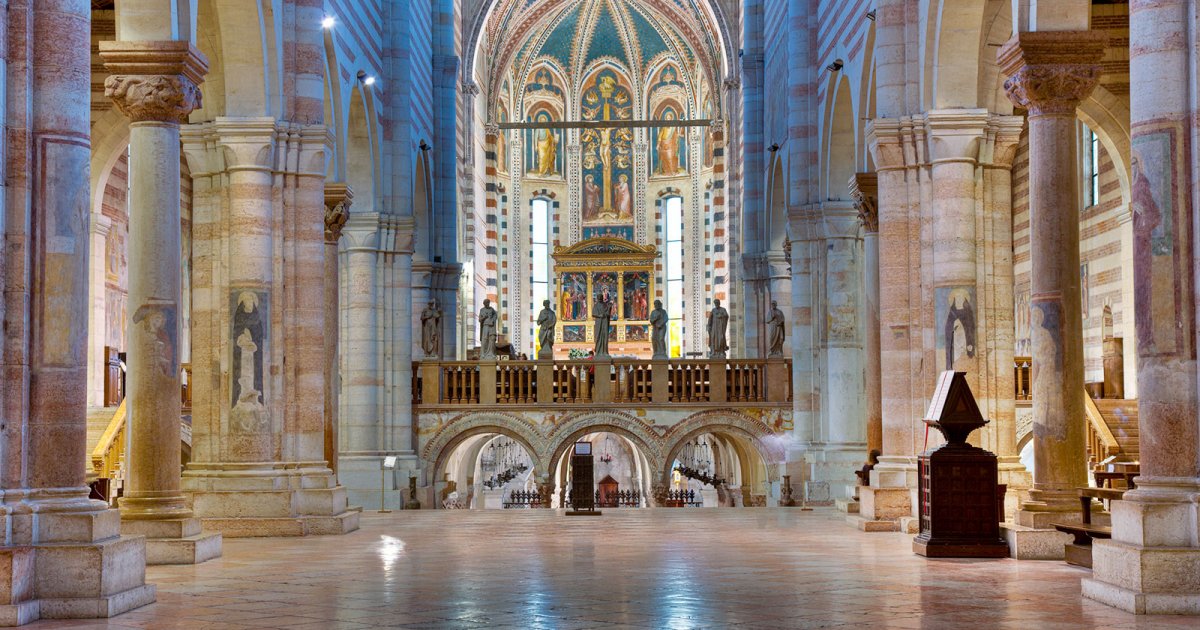BASILICA OF SAN ZENO, Interior
 Language: English / USA
Language: English / USA
The entrance to the Basilica of San Zeno is on the left, next to the tower.
The first part you come to is the beautiful four-sided Romanesque-Gothic cloister, supported by slender double columns.
A pavilion protruding from the cloister was once used by the monks to wash themselves.
Along the galleries, you can see fragments of sculptures and frescoes, and there is an attractive view of the side of the Basilica, which is entered through a side door.
What you’ll find immediately striking about the interior is the bright light that floods throughout the huge edifice, supported by large pillars and topped with an original wooden ceiling shaped like the keel of a ship, dating to the late 14th century.
On the pillars, on the inside of the facade and along the walls, you can admire numerous frescoes from the 13th and 14th centuries, almost all of them anonymous, which document the evolution of painting in Verona in the late Middle Ages. The huge, popular figure of Saint Christopher, on the right wall, is particularly striking.
Take a look at the stairs that descend into the huge Romanesque crypt, supported by slender columns topped with beautiful capitals: a gate protects the recent altar in which the body of Saint Zeno is kept.
The crypt lies below the large high altar, preceded by a marked-off area with thirteenth-century statues of Christ and the Apostles.
Now press pause and press play again at the top of the stairs.
The most impressive feature of the high altar is the magnificent Triptych painted by Andrea Mantegna in 1459. The painting maintains the traditional division into three parts, but also features innovative solutions: the three parts form a single architectural whole, emphasized by the wooden frame, spread across which are the numerous characters gathered around the throne with the Madonna and Child.
The three smaller panels at the bottom are copies of the originals, which were taken to France by Napoleon. Thanks to this work, painted at the age of just 28, Mantegna was appointed painter to the Court of the Gonzaga family, and moved to Mantua.
At the back, on the left, is the fourteenth-century colored marble statue known as “Saint Zeno laughing”, because of the smiling expression on the face of the saint, who looks satisfied with the fish he’s just caught.
An interesting fact: conserved in the isolated little church of San Zeno in Oratorio, towards Castelvecchio, along the banks of the Adige, is an unusual relic – the stone the Saint usually sat on while fishing in the river!
Our visit to the Basilica of San Zeno ends here. MyWoWo would like to thank you - see you again at another Wonder of the World!



